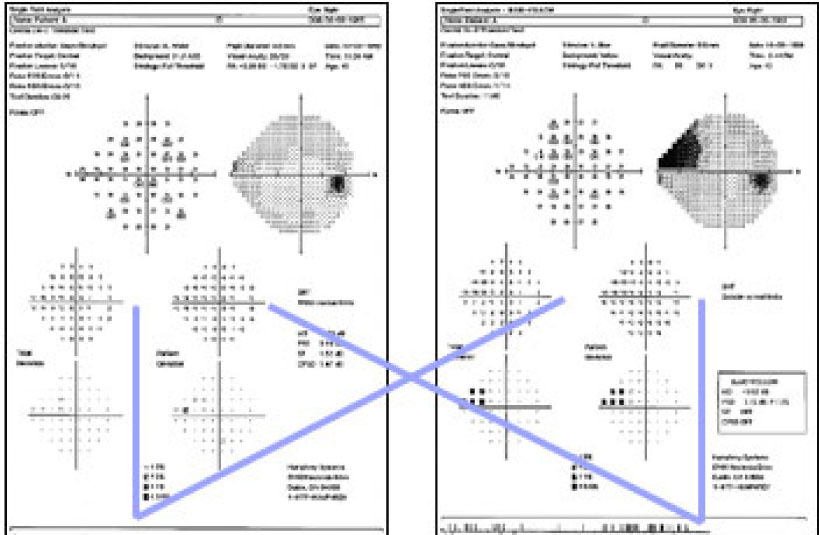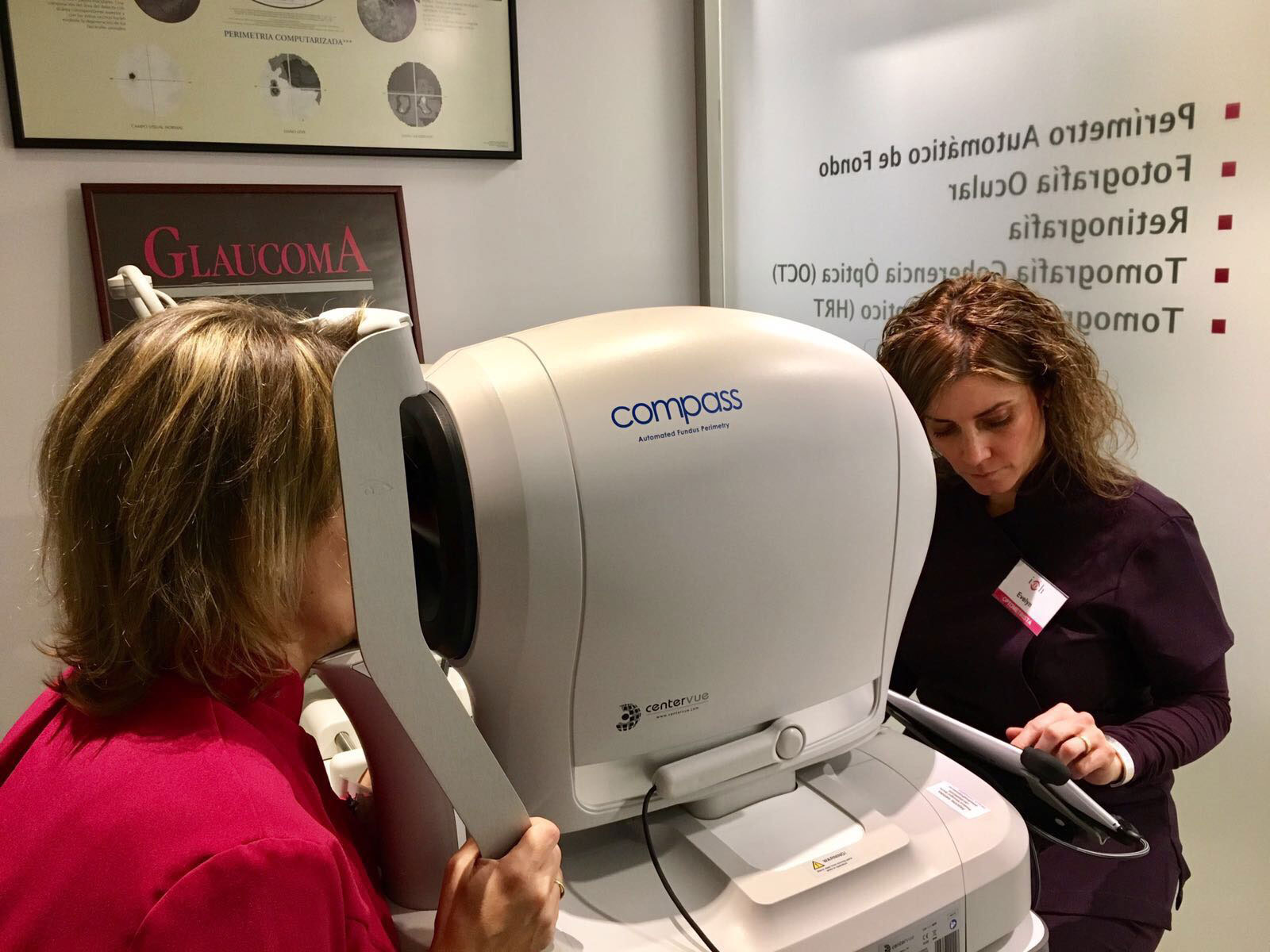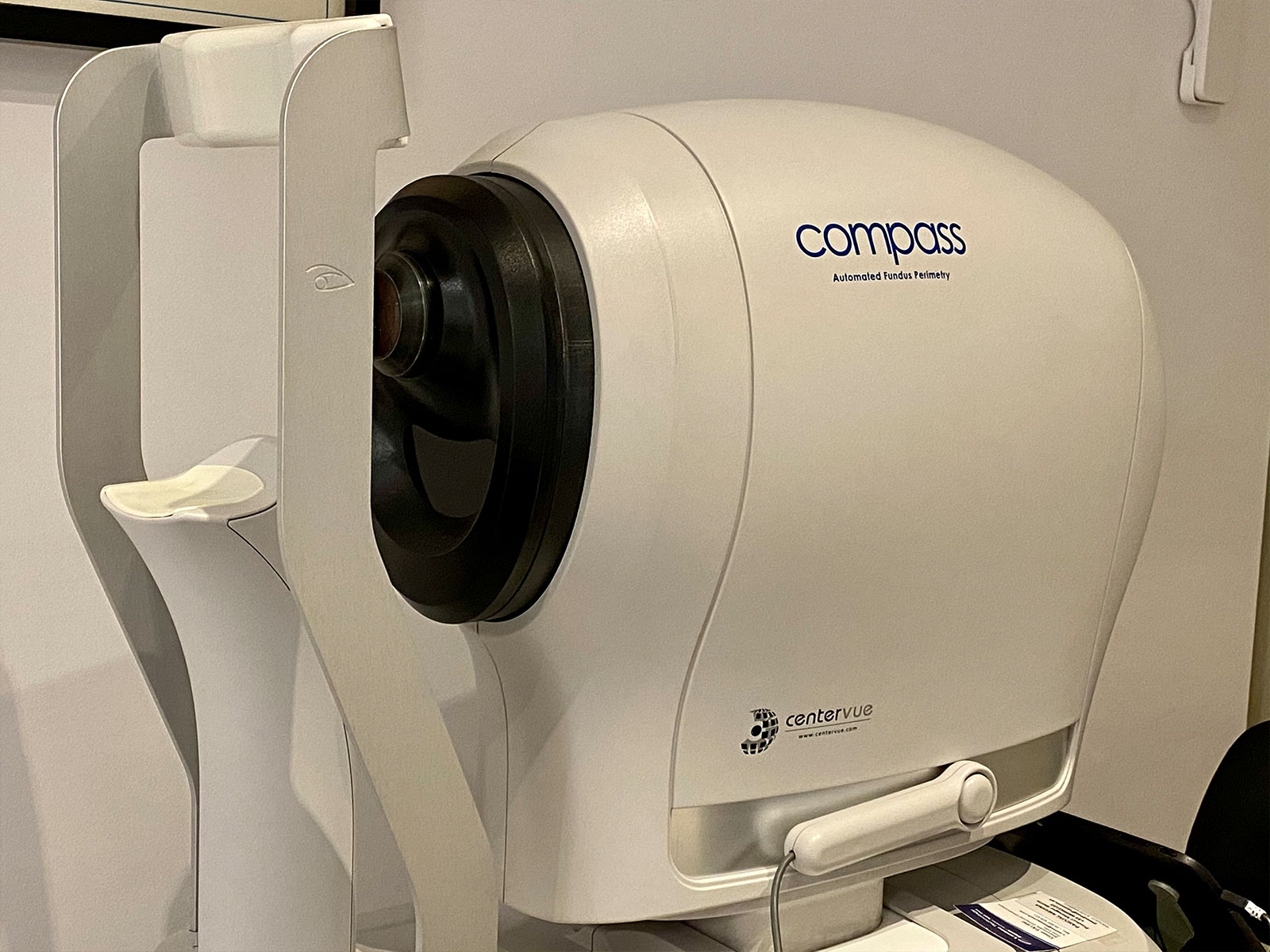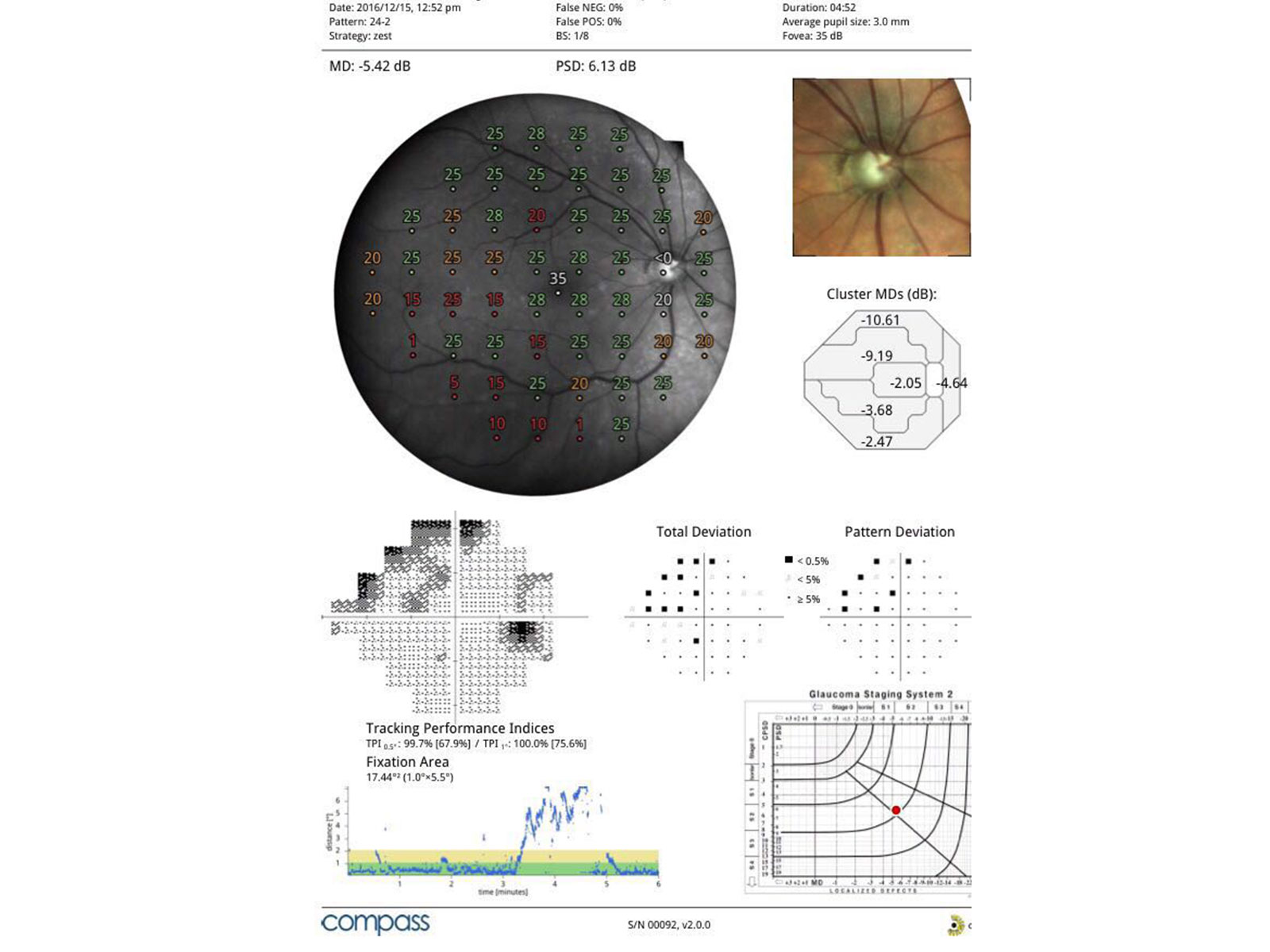CAMPIMETRY
Study of the visual field
Campimetry or computerized perimetry is an exploratory technique in which the patient must sit in front of a screen and focus on a central point. A computerized program makes small lights twinkle in different places on the screen and the patient must press a button to indicate that they have detected these small lights in their peripheral vision.The responses of the patient are then compared with a control group of equivalent age to determine the presence of defects in their visual field.
In the H.O.I we have at our disposal standard automated perimetry equipment and the latest technology of Automatic Fundus Perimetry (the Compass ). The advantage of the latter perimetry is that it is capable of measuring sensitivity in specific areas of the retina with greater precision, thanks to the compensation of ocular movements based on retinal tracking.
The study of the visual field enables us to diagnose any reduction in the area of the field of vision or the loss of any part of it. Being able to detect these alterations helps us to diagnose and follow up Glaucoma, as well as diagnosing other diseases which can affect our peripheral vision, such as certain neurological diseases ( Intracranial tumors and inflammation of the optic nerve ),vascular diseases of the retina ( venous or retinal thrombosis ) and degenerative processes which are specific to the retina, such as pigmentary retinitis. With glaucoma, the evolution of the lesion in the field of vision is fundamental for the control and treatment of the patient, meaning that carrying out periodical campimetry is absolutely necessary.
The glaucomatous lesion of the optic nerve which occurs in glaucoma produces loss of vision. Peripheral vision is more sensitive to the glaucomatous lesion which means that the patient experiences noticeable changes in their peripheral field of vision before noticing any decrease in their central visual acuity.




